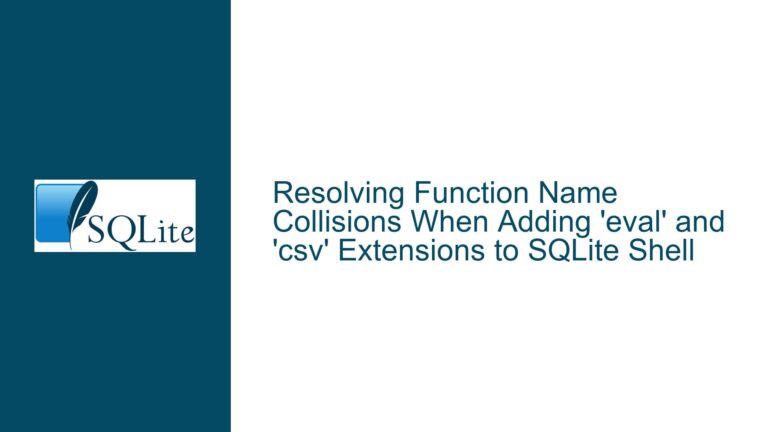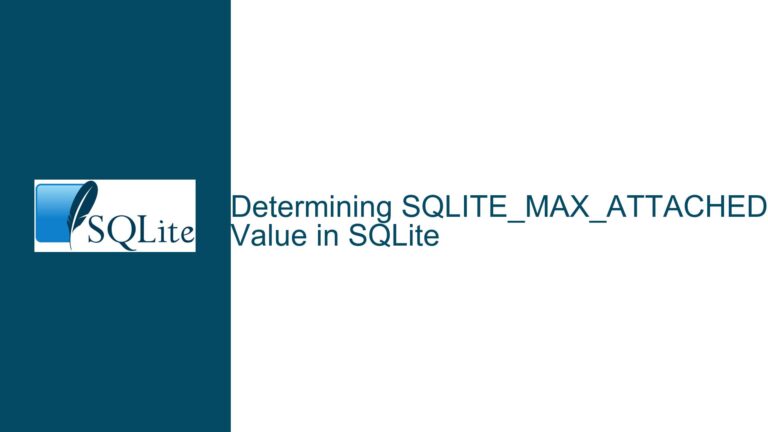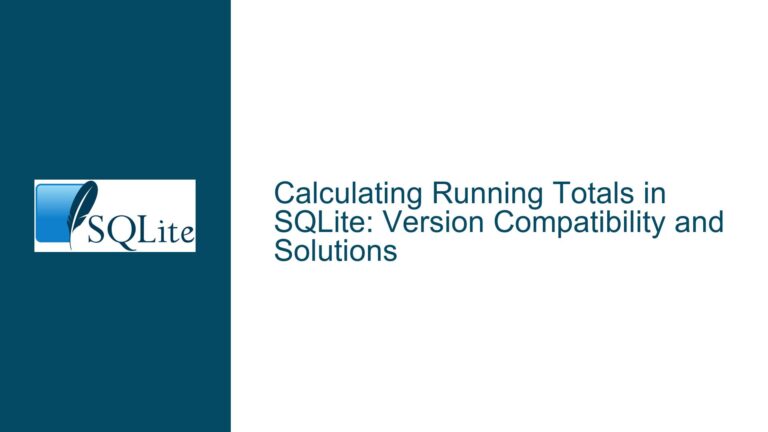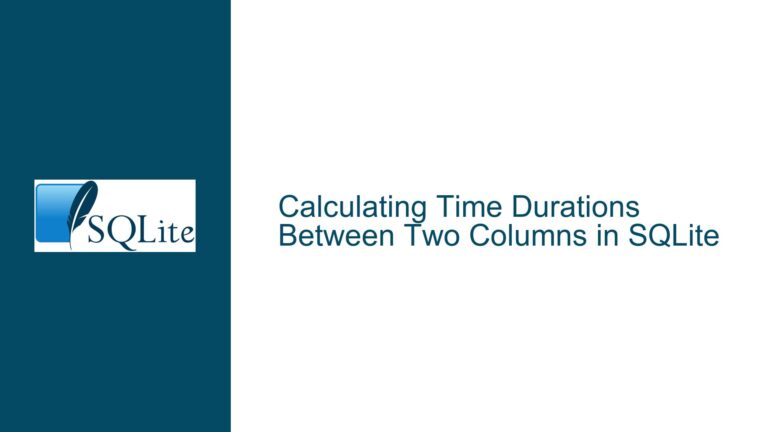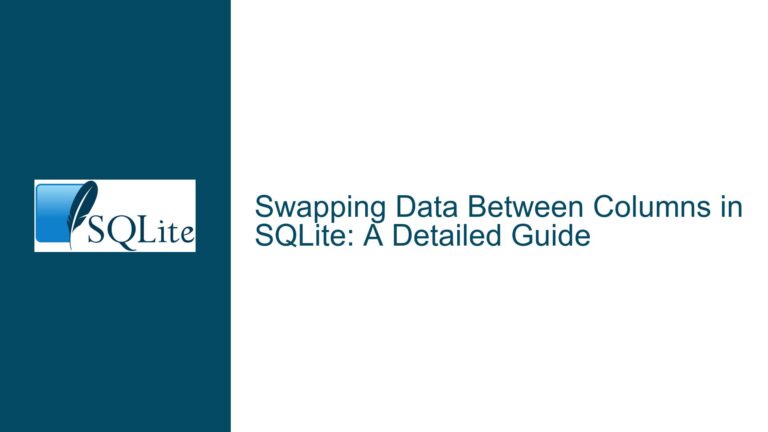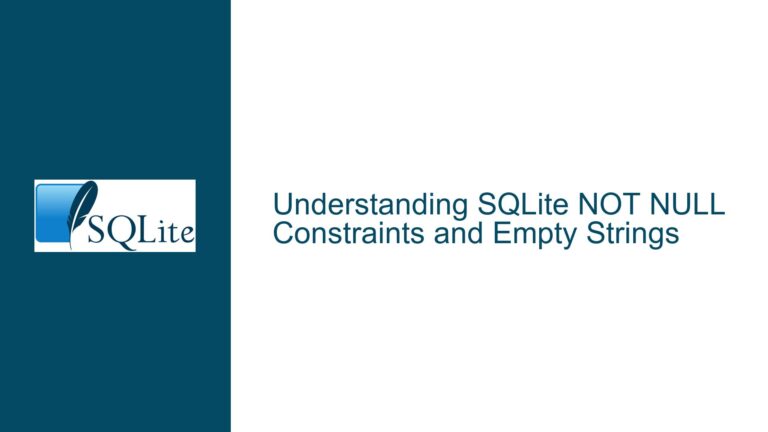Resolving Function Name Collisions When Adding ‘eval’ and ‘csv’ Extensions to SQLite Shell
Function Name Collisions in SQLite Shell Extensions When attempting to add the ‘eval’ and ‘csv’ extensions to the SQLite shell, users encounter function name collisions that prevent successful integration. Specifically, the ‘callback’ function in the ‘eval’ extension conflicts with a pre-existing function of the same name in the shell.c code. Similarly, the ‘csv_read_one_field’ function in…
